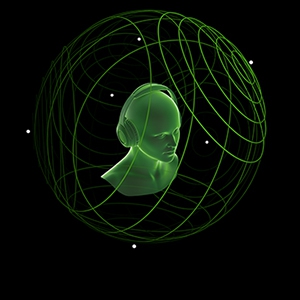bitbydeath
Member

DISCLAIMER: This is an information thread, not a comparison thread. Please leave your comparisons or MeToo's for other such threads. Also please tag me if you believe something of value is missing.






|


| 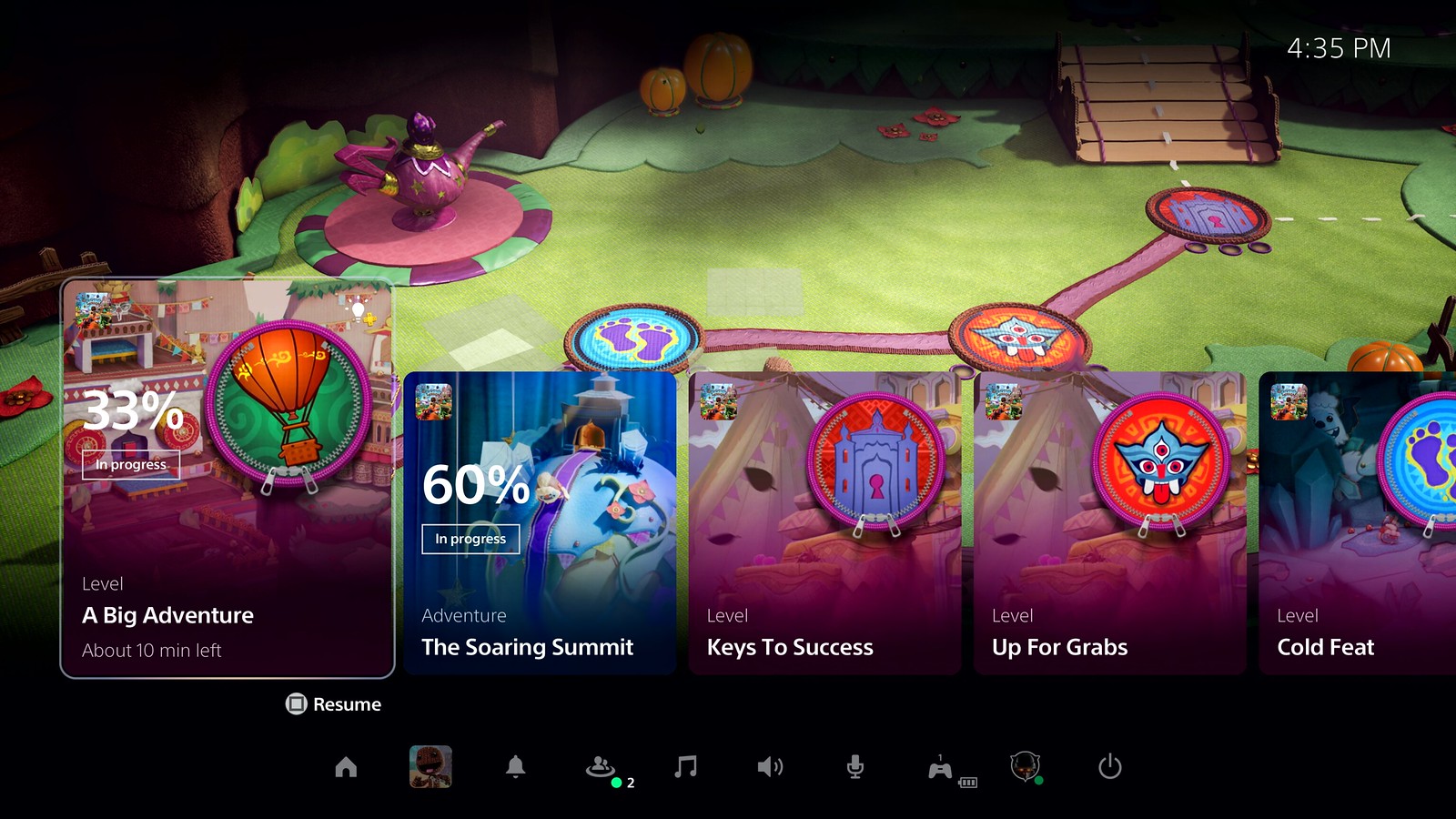
|




Other Applications available at launch:
Funimation
Plex






More information on BC can be found here




Sony is investing heavily in 3D audio via a dedicated Tempest Engine with custom designs to make sound appear more realistic and situational.
The "tempest engine" is based on AMD's GPU technology, and is built around SPU-like architecture, which is not dissimilar to the PS3.
It has enough processing ability (with a kind of processing called single instruction, multiple data, or SIMD) as all of the PS4’s eight-core processing capability combined — just for 3D audio.
"Where we ended up is a unit with roughly the same SIMD power and bandwidth as all eight Jaguar cores in the PS4 combined," Mark Cerny reveals in his presentation.
"If we were to use the same algorithms as PSVR, that's enough for something like five thousand sound sources - but of course we want to use more complex algorithms, and we don't need anything like that number of sounds."
The PS5’s new Tempest Engine will support hundreds of sound sources, meaning it will appear that sound could be coming from hundreds of different directions as you hear it in a game. When you have something like raindrops, you’ll hear them coming from many different directions.
You can also more precisely track locality, or where objects are located. If an enemy is sneaking up on you, you’ll be better able to tell that.
Going forward, Sony is optimistic about great results from virtual surround from TV speakers and sound bars, with multi-speaker systems also due for support.
However, the ambition of the surround audio system is such that we may not see its potential fully realised for some time.
Note: Not every game is going to have super complex audio sampling and rendering, and for those games, Cerny says the Tempest 3D Audio Engine can be used as an extra processor for certain types of calculations.

PS5 features hardware based Ray Tracing.
Ray tracing simulates the way light moves in real life, and how it bounces off various surfaces. Games that take advantage of this feature will render objects much more accurately, and with heightened realism. Water, glass, light refraction, a character’s hair and so on, will look even more realistic.
PS5's Ray tracing uses the same strategy as AMD's upcoming PC GPUs.
The CU's contain a new specialized unit called the intersection engine which can calculate the intersection of rays with
boxes and triangles.
I've (Mark Cerny has) already seen a PlayStation 5 title that's successfully using ray tracing based reflections in complex animated scenes with only modest costs.
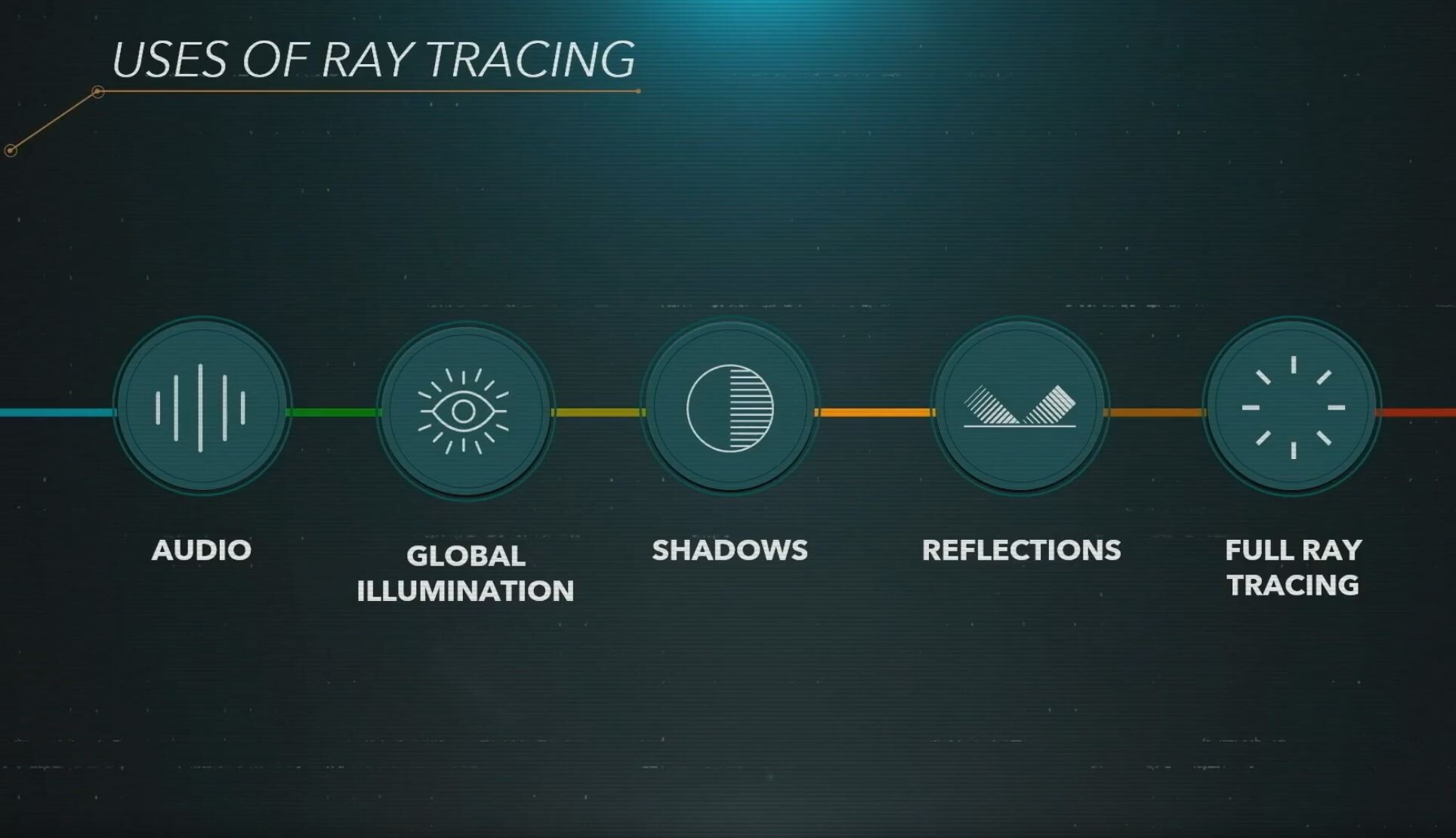

CPU overhead from data decompression and management is pretty high. The more data that's moved, the more the CPU is taxed, and if it's pushed too far, frame rates drop astronomically.
To solve these issues, a custom decompressor was built directly into the I/O (Input/Output) unit.
"By the way, in terms of performance, that custom decompressor equates to nine of our Zen 2 cores, that's what it would take to decompress the Kraken stream with a conventional CPU," Cerny reveals.

PS5's GPU is equipped with what is known as a Cache Scrubber.
This function is used to improve efficiency and ensure the cache isn't filled with redundant data.
The whole process of loading it happens invisibly to you (the developer) and at very high speed.
Allowing the dream of no load screens and super-fast streaming to become a reality.
To avoid further impacts to GPU performance - we've (Sony has) implemented coherency engines to inform the GPU of the overwritten address ranges and custom scrubbers in several dozen GPU caches to pinpoint evictions of just those address ranges.

This memory is synergized with the SSD on an architectural level and drastically boosts RAM efficiency. The memory is no longer "parking" data from an HDD; the SSD can deliver data right to the RAM almost instananeously.
The result sees RAM only holding assets and data for the next 1 second of gameplay. The PS4's 8GB of GDDR5 memory held assets for the next 30 seconds of gameplay.
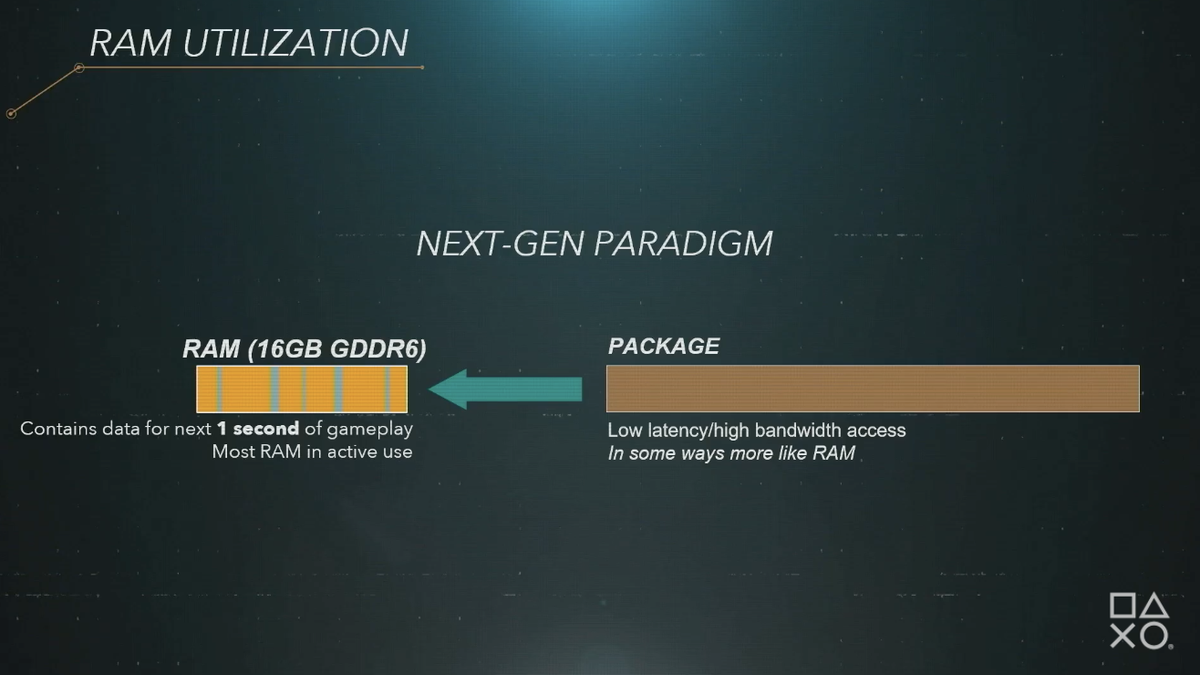

The I/O unit is capable of handling over 5 gigabytes of kraken format input data a second. After decompression that typically becomes eight or nine gigabytes but the unit itself is capable of outputting as much as 22 gigabytes a second if the data
is compressed particularly well.
The I/O unit also contains a large pool of SRAM which is used principally to direct the variety of custom hardware around it.
A dedicated DMA controller (equivalent to one or two Zen 2 cores in performance terms) directs data to where it needs to be, while two dedicated, custom processors handle I/O and memory mapping. On top of that, coherency engines operate as housekeepers of sorts.
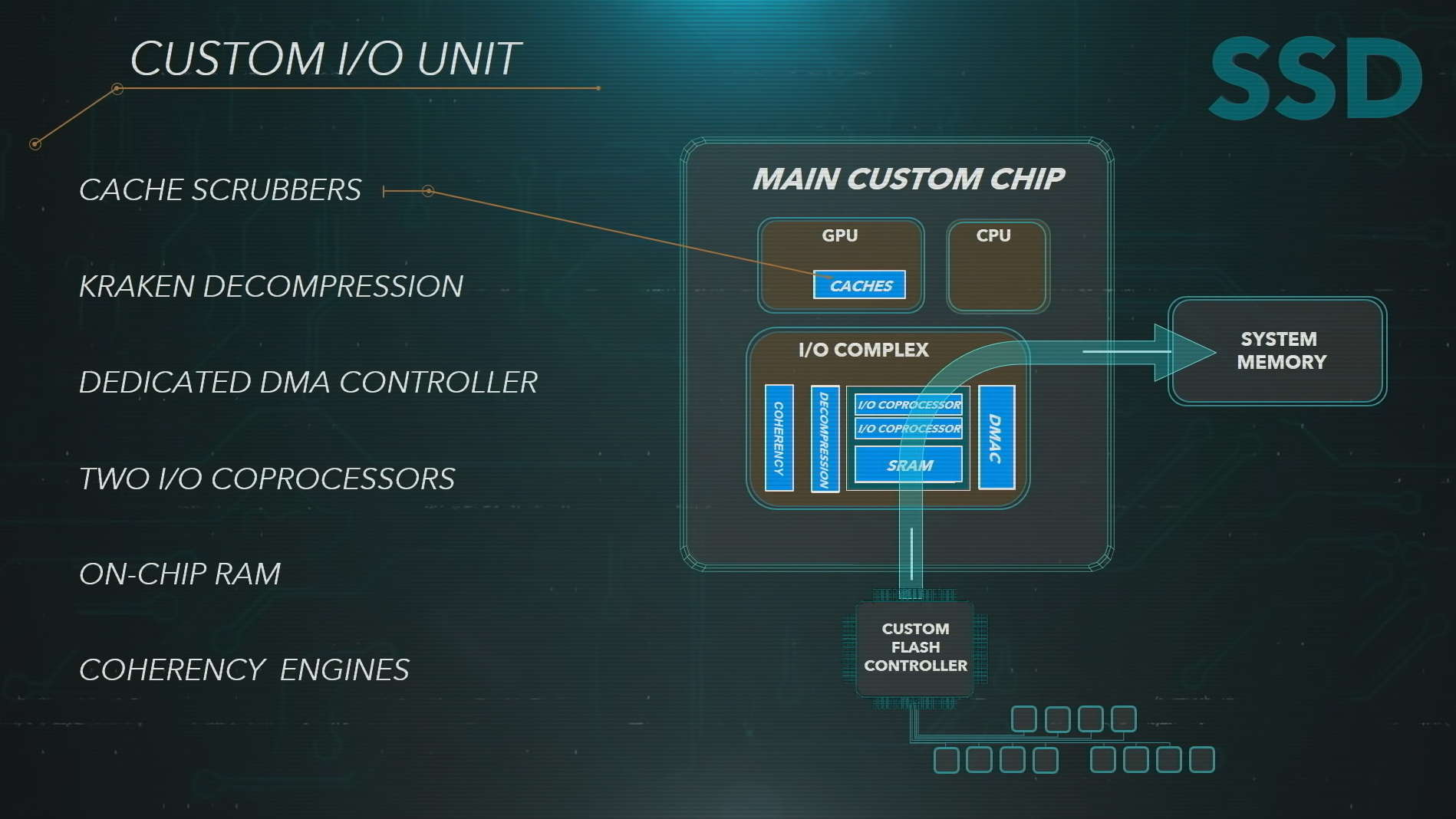

The SSD is so fast that textures can be loaded within the same second that you move the player.
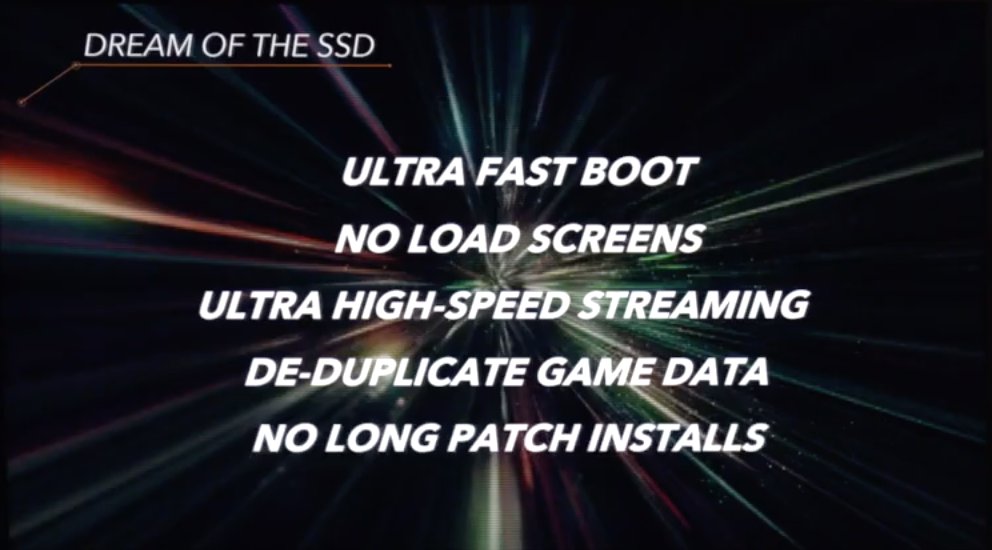


https://www.wired.com/story/exclusive-sony-next-gen-console/
https://www.wired.com/story/exclusive-playstation-5/
https://blog.us.playstation.com/201...next-gen-playstation-5-launches-holiday-2020/
https://venturebeat.com/2020/03/18/playstation-5-mark-cerny-explains-tempest-engine-for-3d-audio/
https://www.tweaktown.com/news/7134...ep-dive-into-next-gen-storage-tech/index.html
https://www.eurogamer.net/articles/...s-and-tech-that-deliver-sonys-next-gen-vision
https://blog.us.playstation.com/202...w-wireless-game-controller-for-playstation-5/
https://www.gamesradar.com/ps5-audio-tempest/
https://www.techradar.com/news/ps5-...quire-you-to-send-sony-a-picture-of-your-ears
https://www.bloomberg.com/news/arti...n-limited-playstation-5-output-in-first-year
https://blog.playstation.com/2020/0...499-for-ps5-with-ultra-hd-blu-ray-disc-drive/
https://blog.playstation.com/2020/10/15/first-look-playstation-5s-next-generation-user-experience/
https://blog.playstation.com/2020/10/09/ps4-games-on-ps5-your-top-questions-answered/
https://blog.playstation.com/2020/1...p-entertainment-streaming-apps-coming-to-ps5/
https://blog.playstation.com/2020/11/09/ps5-the-ultimate-faq/
Last edited:



